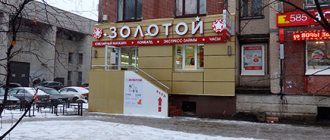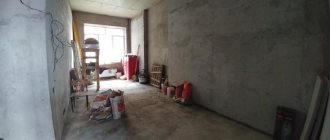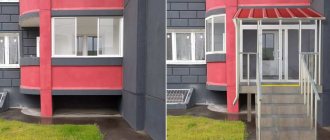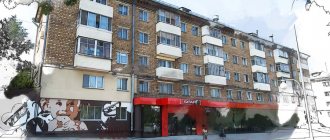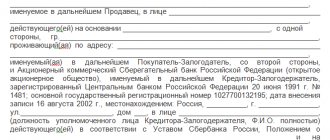The need to transfer residential premises to non-residential premises arises for various reasons, in particular, for the purposes of commercial use or to declare a residential property unsuitable for human habitation (Regulation No. 47 of January 2006). The procedure for translation is regulated by Ch. 3 of the Housing Code of the Russian Federation and other regulatory legal acts relating to urban planning in Russia. Let us note that the transfer of residential premises to non-residential premises implies a change in status and legal regime, which means that the procedure for using this premises also changes. In order to transfer a residential apartment to a non-residential property, first of all, it is necessary to collect a package of documents, the list of which includes:
- identification document of the applicant;
- notarized copies of title documents (certificate of ownership, court decision, etc.);
- technical passport of the premises and plan of all floors of the house, obtained from the BTI;
- reconstruction project for premises being transferred to non-residential use; the document will need to be provided in the event of further reconstruction and redevelopment of non-residential premises for commercial use;
- consent of all owners of residential premises to change its status and purpose, certified by a notary; official written consent to conduct the transfer procedure to one of the owners;
- notarized power of attorney from the owner of the premises (required if the transfer procedure is performed by another person);
- original and notarized copies of constituent documents (required if the residential premises belong to a legal entity);
- an extract from the house register confirming the absence of persons registered in the apartment being transferred to non-residential use.
The validity period of the certificate from the passport office is 14 days.
Conventionally, the process of converting residential premises into non-residential premises is divided into three stages:
- Preparation and submission of an application to the authorized body.
- Reconstruction, redevelopment and redevelopment with approval from the relevant authorities.
- Registration of ownership of premises removed from the housing stock.
The collected package of documents, together with an application drawn up in a certain form (a sample is provided at the relevant institutions), is submitted to the multifunctional center or the administration of the district where the residential property is located.
Is it possible to transfer an apartment to non-residential premises: legislation
When deciding to transfer residential premises to non-residential premises in St. Petersburg, Moscow and any other city, you need to take into account several laws:
- Ch. 3 Residential Complex of the Russian Federation. Contains the conditions, procedure and grounds for refusing to change the status of housing.
- SP 54.13330.2011. You need to focus on them when remodeling. In the future, the commission will check whether the premises meet the established requirements.
- Decree of the Government of the Russian Federation of April 28, 2005 N 266 “On approval of the application form...”. Contains a unified application form for redevelopment.
- Federal Law “Technical Regulations on Fire Safety Requirements” dated July 22, 2008 N 123-FZ. It must be observed when performing construction work.
Note: regional authorities may issue their own legislation, making changes or additions to the transfer procedure and premises requirements.
Types of residential premises
According to Art. 16 of the Housing Code of the Russian Federation, there are several types of residential premises:
- Private residential buildings and parts of houses.
- Apartments and parts of apartments.
- Rooms.
It is important to take into account that it will not be possible to transfer part of an apartment, house or a separate room to non-residential premises. This is technically impossible, because... all requirements will not be met. Only complete housing that meets all criteria is transferred to non-residential status.
How to convert a garage into residential or non-residential premises?
What is non-residential premises - definition according to the Housing Code of the Russian Federation
Duration and cost of procedures
Let's look at how much it costs to transfer an apartment to non-residential premises and how long this procedure will take:
- the stage of obtaining consent from the owners of apartment buildings can take up to 1-2 months, and costs will be associated with organizing and holding the meeting;
- registration of the project takes from several days to 1-2 weeks, and the cost of design work is determined by contract;
- the cost and timing of drawing up a technical report is also determined by agreement with an expert organization;
- approval at the Moscow Housing Institute takes up to 45 days, and there is no state fee for the procedure;
- a technical plan can be obtained in 1-5 days, and the cost of work is determined by agreement with a cadastral engineer;
- making changes to the Unified State Register is free of charge, within 12 days.
Additional costs may be associated with support of approval procedures. Preliminary prices for services and documents of our company can be viewed in the table below.
When might it be necessary to transfer an apartment to non-residential premises?
Most often, people transfer real estate from residential to non-residential for several reasons:
- Conducting business activities. According to Art. 17 of the Housing Code of the Russian Federation, in the apartment you can engage in tutoring, work as a freelancer, or engage in other professional activities, if this does not violate the rights and interests of neighbors. But it won’t be possible to open an industrial production or a hotel in housing; you need to change the status of the premises to non-residential.
- In the region there is a ban on certain types of business activities in apartments and houses. To deal with them, you need to transfer the housing to non-residential status.
Note! In some regions, it is prohibited to open stores selling alcoholic beverages. It is best to check local legal requirements in advance.
Nuances in private housing and multi-apartment real estate
- The first important point. In an apartment building, it is necessary to obtain the consent of residents for the transfer.
This can be a very unpleasant and lengthy process. In a private house this problem will not arise. Of course, it is still recommended to coordinate your future business with the residents of nearby houses in a neighborly manner. If it involves a lot of noise (for example, a car repair shop), then it is still better to discuss these points with your neighbors in advance, rather than receive complaints in the future. - The second nuance is the type of land under the house. If the land is issued for individual housing construction, then a building for commercial activity cannot be placed on it.
You may be interested in learning about how to convert non-residential premises into residential ones and how to write applications for this and what documents are needed.
Conditions for transfer to non-residential premises
To transfer a residential building or apartment to non-residential premises, several conditions must be met:
- Obtain the consent of all owners of adjacent housing.
- You cannot change the status of an object for religious activities, regardless of religion.
- Obtain the consent of all owners of the apartment building. It is drawn up based on the results of the meeting.
- It will not be possible to transfer the status to non-residential if the property is used under a social tenancy agreement or belongs to the category of social housing.
- Only the owner, whose rights are confirmed by documents, has the right to execute the transfer.
- It will not be possible to transfer housing if it is under arrest, pledged, or encumbered with other rights of third parties to it.
- If the property was purchased during marriage, the transfer will require the consent of the spouse.
Legal advice: it is better to discuss the issue of transfer with your neighbors in advance before formalizing the documents. A general meeting is necessary in any case, but if there are many opponents, having learned about them before voting, you have a better chance of finding those who will not mind and agreeing that they will definitely come to the meeting.
How to convert part of a house into housing stock
Conversion of only part of the building into residential use is possible if certain criteria are met.
Conditions for transferring part of the building into housing stock:
- The applicant is the official owner of the building.
- Real estate is not a guarantor of debt obligations, or under arrest.
- Compliance with all standards and regulations required for residential properties.
- The house is located within the city with developed infrastructure and has communications.
- It is in disrepair, intact, without damage that poses a danger to future residents.
The algorithm of actions is identical to converting a building into an apartment.
Technical requirements for the premises
There are also technical requirements for transferred residential real estate that must also be observed:
- The apartment should be located on the first floor. It is also possible to transfer apartments on the upper floors, but only if all the premises below are non-residential.
- It is necessary to equip a separate entrance. There is no point in doing it before the redevelopment and approval of the transfer; it is better to start arranging it in the process. There must be a direct entrance to the premises; use of the entrance is not allowed.
- The object must be completely isolated.
- You must not create obstacles to the use of common property: staircases, elevators, etc.
- If the building is classified as a cultural heritage site, the redevelopment must be approved through the cultural committee or other institution in the region.
- If the facade is affected during construction work, coordination with the architecture committee is required.
Note! If a residential private house is transferred to non-residential premises, you need to look at the type of permitted use of the land. For example, commercial activities are prohibited on certain categories of land. In this case, you will first have to change the status of the site, and then deal with the premises.
Conditions of the procedure
The procedure is permissible if the conditions specified in Art. 22 Housing Code of the Russian Federation:
- The premises must be equipped with an independent entrance from the street - it is necessary to ensure the isolation of the facility. With an area of over 100 sq. meters, an emergency exit is needed.
- The object is located on the first floor. If it is located higher, the remaining premises should be non-residential.
- It is prohibited to create obstacles to the use of common property by other citizens (for example, blocking a passage), or to dismantle structures and networks belonging to a single system.
- Activities related to translation should not provoke the threat of collapse of the house or reduce its reliability.
Attention! Residential premises are converted into non-residential premises and, conversely, non-residential premises are completely converted into residential ones. That is, changing the status of a part or share of a real estate property is not allowed.
When is it impossible?
The procedure is not carried out if:
- A person permanently resides or is registered in the premises.
- The principle of isolation of the area (presence of a separate entrance) is not observed.
- The property is the subject of a pledge, the bailiffs intend to seize it, that is, there is an encumbrance with the rights of third parties.
- The living space is in a technically unsatisfactory, emergency condition, and is not connected to utilities.
- The apartment is located in a building that serves as a cultural site.
- The room acts as part of the object.
- Housing is located in a rented social housing building.
- The premises are intended for religious activities.
- Neighbors did not express their approval.
Transferring residential premises to non-residential premises: step-by-step instructions
To convert a residential apartment to non-residential real estate you need:
- Get a redevelopment project.
- Coordinate changes with neighbors.
- Submit documents to the administration for approval of the redevelopment.
- Carry out construction work.
- Receive an inspection report and a conclusion on the compliance of the premises with the requirements.
- Receive a transfer decision.
- Make adjustments to the Unified State Register.
Let's look at each step in more detail.
Step 1: registration of redevelopment
This means ordering a redevelopment project. It is better to do this before the meeting of the owners of the apartment building, so that people understand what changes are planned to be made. If controversial issues arise, they can be resolved directly at the meeting.
The project is formalized in an organization that has SRO approval. The specialist will need technical documents for housing, as well as access to it. He will examine the premises and then make a design. The document will indicate the planned technical changes, a description of all types of work, the purpose of the redevelopment (change in the status of the facility), and measures to ensure fire safety.
Note: the project production period is indicated in the contract. Usually this is 2-3 weeks.
Step 2: coordination with neighbors
First you need to coordinate the changes with the owners of the adjacent apartments: on the side, above and below. Consent is drawn up in simple written form. After this, everything is agreed upon with the other homeowners in the apartment building at a meeting.
What should be done:
- Notify apartment owners of the upcoming meeting, indicating the agenda. Notifications are sent no later than 14 days before the scheduled date. You can obtain information about all owners by ordering an extract from the Unified State Register for an apartment building in Rosreestr. It will be done in 3-4 days, it costs 350 rubles.
- To hold a meeting. At least 50% of the owners must be present. You can also involve the HOA. At the meeting, the agenda is announced and the redevelopment project is shown.
- Conduct a vote and, based on the results, draw up a protocol indicating all participants in the meeting.
- Prepare a participant registration sheet and protocol. These documents will be needed at the next stage.
Note! The meeting can be held in absentia. But to do this, the owner of the transferred premises will have to visit all the residents and personally answer all questions about the agenda. To attract more allies, it is worth explaining to people why opening a commercial organization in their home is beneficial. If possible, the owner of the premises can “appease” the other owners by promising to improve the yard area.
Step 3: submitting documents to the administration
To transfer residential premises to non-residential premises, the following documents must be submitted to the administration:
- application for transfer;
- application for redevelopment;
- owner's passport;
- MKD floor plan;
- extract from the Unified State Register of Real Estate;
- floor plan;
- redevelopment project;
- technical report on the condition of load-bearing walls;
- written consent of the owners of adjacent premises;
- minutes of the general meeting of owners;
- extract from the Unified State Register of Real Estate.
Legal advice: the administration may additionally request a registration certificate and documents on the basis of which ownership rights are registered (sale and purchase agreement, exchange, donation, etc.). It's better to introduce them right away.
Contents and sample application for redevelopment
The application is filled out in the prescribed form. What information does it contain:
- The name of the local government body to which it is submitted.
- Full name, address, passport details of the owner-applicant.
- Residential address.
- Request for permission to redevelop according to the attached project.
- Full name, notes on the consent of the remaining owners.
- List of attached documents.
- Date of compilation and signature.
Contents and sample application for transfer of residential premises to non-residential premises
This application contains the same information as in the one presented above, only instead of a request for approval of redevelopment, you need to write that it is necessary to change the status of the object to non-residential.
Sample application
Step 4: Get the solution
Submitted documents are reviewed by the administration for no more than 45 calendar days. During this time, the redevelopment must be agreed upon, a decision or resolution must be drawn up to change the status of the object to non-residential.
Note! The decision of the head of administration is sent to the owner within three days.
Step 4: redevelopment
If the administration has agreed to the redevelopment, construction work can begin. The agreement must be concluded with an organization that has SRO approval. It is important that the work is carried out in accordance with the project, otherwise it will not be accepted.
Step 5: inspection of the premises and receipt of the certificate
When the work is completed, you need to submit a notification to the administration. A commission consisting of employees of the housing department, the Ministry of Emergency Situations, architecture and other departments will check whether the premises meet the established requirements. If there are any shortcomings, they will be given several days to eliminate them. If everything is in order, an acceptance certificate is issued.
Step 6: ordering a technical plan
After signing the acceptance certificate, you need to order a new technical plan from a cadastral engineer with SRO approval. He will inspect the premises and draw up a document containing the main characteristics of the property after redevelopment.
Step 7: making changes to the Unified State Register
All changes must be reflected in the Unified State Register. You need to submit an application directly to Rosreestr or through the MFC; in some regions, an application through State Services is available.
Along with the application, a passport, a resolution on the transfer of the object’s status, an acceptance certificate and a technical plan are submitted.
Note: changes will be made within 5-7 days. As a result, the owner will be given an extract from the Unified State Register of Real Estate, where the premises will already be listed as non-residential.
Documentation
Those who are interested in how to convert a home into a store or workshop should start with a visit to the local administration. They will tell you whether the house belongs to architectural, cultural values or to emergency housing stock. After all, if the building falls into one of these categories, it will not be possible to obtain approval from officials.
The municipality will also inform you about the required documentation package. Preparing all the necessary papers is an important step. Failure to provide the required certificate may result in a legal refusal.
The list of documents that are needed for re-registration is established in Art. 23 LCD. The homeowner should assemble a kit consisting of:
- statements;
- title documents or their notarized copies;
- plan, technical certificate of the premises;
- floor plan of the apartment building, if the object is an apartment;
- a reconstruction or redevelopment project, if such manipulations are necessary for the full use of the property;
- minutes of the general meeting of owners of apartment buildings;
- approval of each neighbor occupying adjacent apartments.
Neighborhood consent is drawn up in writing in any form. The full name, address and passport details of the signatory must be indicated.
Important! Officials do not have the right to require the applicant to provide papers not provided for in the Housing Code of the Russian Federation.
How much does it cost to remove an apartment from the housing stock?
The cost of converting residential real estate to commercial consists of the costs of several documents:
- Notarized consent of all owners, if the housing is in shared ownership - from 1,000 rubles. for one document.
- Extract from the Unified State Register – 350 rubles, if ordered electronically on the Rosreestr website.
- Technical plan – from 5,000 rub.
- Redevelopment project – from 15,000 rub.
Note: there are also organizational costs for holding a general meeting. For example, printing notifications and sending letters by Russian Post costs on average 5,000 rubles. It is also necessary to take into account the costs of the redevelopment itself; they depend on the type of changes made, the list of works and the total area of the room.
How long to wait for an answer?
Decision on application within 45 working days. If you add weekends, that’s more than 2 months of waiting. It’s not a fact that you will have to wait exactly that long - often everything happens faster. But almost always the minimum waiting period is 35-40 days.
The day the decision is made is not the deadline. The applicant will be notified of the results within 3 working days. Given the specifics of the postal service, the notification may not be delivered immediately. Therefore, after filing an application, a person should be patient.
Converting premises from residential to non-residential is not as difficult as it might seem. It’s easy to collect documents, but you will have to spend money on the technical plan and redevelopment project. Submitting an application along with documents is the final stage of the premises owner’s participation in the process. Then all that remains is to wait for the verdict of the local authorities.
What to do if the transfer of housing stock to non-residential property is refused?
According to Art. 24 of the Housing Code of the Russian Federation, a change in the status of a property may be refused for several reasons:
- Inconsistency of the redevelopment project with the established requirements.
- Failure to submit documents to the administration within the established time limits.
- Submission of an incomplete set of documents.
- Presence of restrictions: bail, arrest.
- Changes in project documentation after a meeting of homeowners in the apartment building.
- Violations of the procedure for holding a general meeting.
- The project specifies work that involves reconstruction: adding an additional room, replacing load-bearing structures.
The refusal is issued in writing and issued to the owner no later than 45 calendar days from the date of registration of the application. It can only be appealed in court.
Legal advice: in order not to go to court, it is easier to take into account the comments in the refusal, eliminate them, and then resubmit the documents. This is not prohibited by law. But if the refusal is not justified, you will have to file an administrative claim. If the court satisfies the requirements, the administration’s decision will be canceled and the residential premises will be transferred to non-residential premises based on the decision.
Where and how to submit documents?
The application and documents must be submitted to local authorities. Most often this is the city executive committee. Bodies can be either elected or appointed.
The main thing is that it should be local, municipal government.
Government agencies are not involved in processing the transfer of premises; they simply will not accept the application.
When submitting documents, you need to remember the following:
- The redevelopment project, if necessary, should already be ready. It must be submitted along with other documents. If the project has not yet been completed, then there is no point in writing a statement.
- The technical plan from the BTI does not need to be submitted. Local government employees will order this document themselves. But then, upon receipt of the results of the review, the person will be issued a receipt for payment of BTI services.
- The more detailed and competent the application is filled out, the better. Particular attention should be paid to the purposes of the transfer of premises and the legal grounds. The application should refer to the articles of the RF Housing Code.
If the documents have been accepted, this does not mean that the application will be approved. Refusal, like approval, is not issued immediately, but only after a thorough check.
Arbitrage practice
Typically, the administration refuses to transfer housing from residential to non-residential due to the lack of consent of the owners of adjacent premises or the failure to hold a general meeting, or if the redevelopment project does not meet the established requirements.
Here are some examples of decisions in cases challenging administration refusals:
- Decision No. 2A-937/2020 2A-937/2020~M-475/2020 M-475/2020 dated February 28, 2021 in case No. 2A-937/2020. As a result, the court granted the claim, declaring the refusal illegal. The defendant (administration) was obliged to make a decision to transfer the premises to non-residential status and to issue an acceptance committee report on the completion of the redevelopment.
- Decision No. 2A-2855/2019 2A-437/2020 dated February 27, 2021 in case No. 2A-1766/2019~M-1283/2019. The demands were rejected in full.
- Decision No. 2A-102/2020 2A-102/2020~M-27/2020 M-27/2020 dated February 20, 2021 in case No. 2A-102/2020. The administration refused the transfer due to the lack of parking spaces, because... The plaintiff planned to use the premises to open a store. The claims were denied.
Lawyer's answers to private questions
I ordered and paid for the redevelopment project, it cost me 30,000 rubles. After this, I organized a meeting of owners, they opposed the transfer of my apartment to the status of non-residential premises. Is it possible to recover expenses from them?
No. Changing the status of a property is the desire of the owner himself. Other owners may be against it, and are not required to reimburse expenses prior to the meeting.
I did the remodeling myself. Now I want to order a project to transfer the apartment to non-residential status. Is it possible to do this?
No. First, a redevelopment project is ordered, then construction work is carried out. Responsibility for illegal redevelopment is provided for under Art. 7.21 of the Code of Administrative Offenses of the Russian Federation, they can be fined up to 2,500 rubles. In addition, on the basis of Art. 29 of the Housing Code of the Russian Federation, the administration has the right to oblige the owner to return the premises to its original condition. But the owner can legalize the changes through the court, and then, based on the decision, the property will be preserved in its redesigned state.
Is it necessary to assign a new number to an apartment after transferring it from residential to non-residential?
No, apartment numbers are assigned once.
Is it possible to convert non-residential premises into apartments?
Apartments are already considered non-residential; they are commercial real estate.
I want to take out a mortgage and buy an apartment on the ground floor in order to open a store in the future. What is the best way to do it: buy a non-residential property right away, or first take a residential one and then convert it to a commercial one?
It is unlikely that a mortgage will be given for non-residential real estate. If you can’t do without it, it’s better to first take a residential apartment, pay off the debt to the bank and transfer it to a non-residential fund. Until the debt is repaid, the object will be pledged to the creditor, and he will most likely not agree to change the purpose of the premises.
Translation costs
There are no fixed costs when changing the status of real estate; they are individual in each case.
You will have to bear the following costs:
- The difference in the price of a non-residential property when it is calculated in the BTI.
- Payment for services provided by the BTI and related to the preparation of a technical passport of the premises, as well as a certificate of the difference in prices before and after the transfer of real estate to the category of non-residential premises.
- Payment for notary services , which will be required when preparing copies of documents for ownership of an apartment, power of attorney;
- Payment of state duty for registration of non-residential premises;
- Payment for the services of a company working on a real estate redevelopment or refurbishment project, if required.
Other articles
How to privatize a municipal apartment - conditions and instructions.
If you have questions, you can consult for free. To do this, you can use the form below, the online consultant window and telephone numbers (24 hours a day, seven days a week): 8 Moscow and region; 8 St. Petersburg and region; all regions of the Russian Federation.


